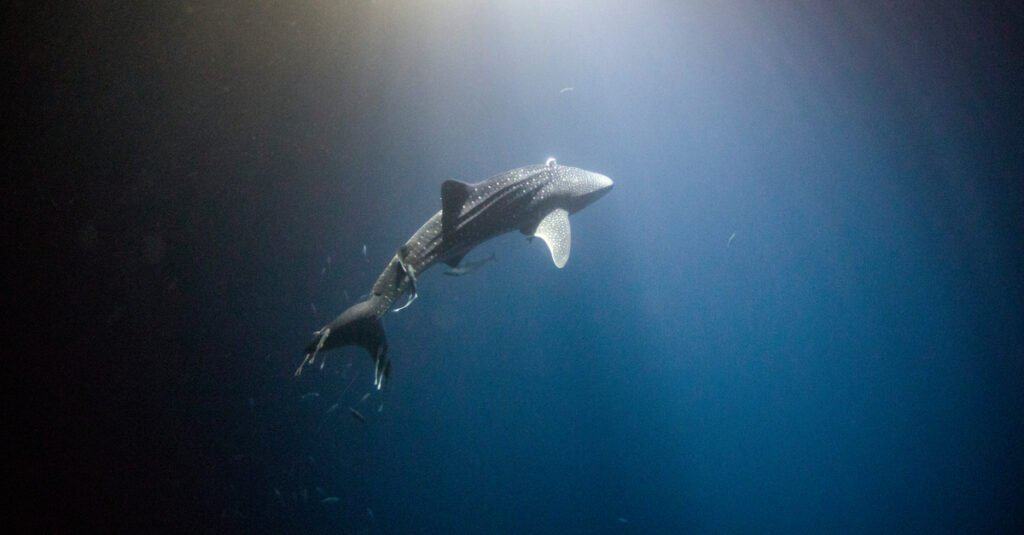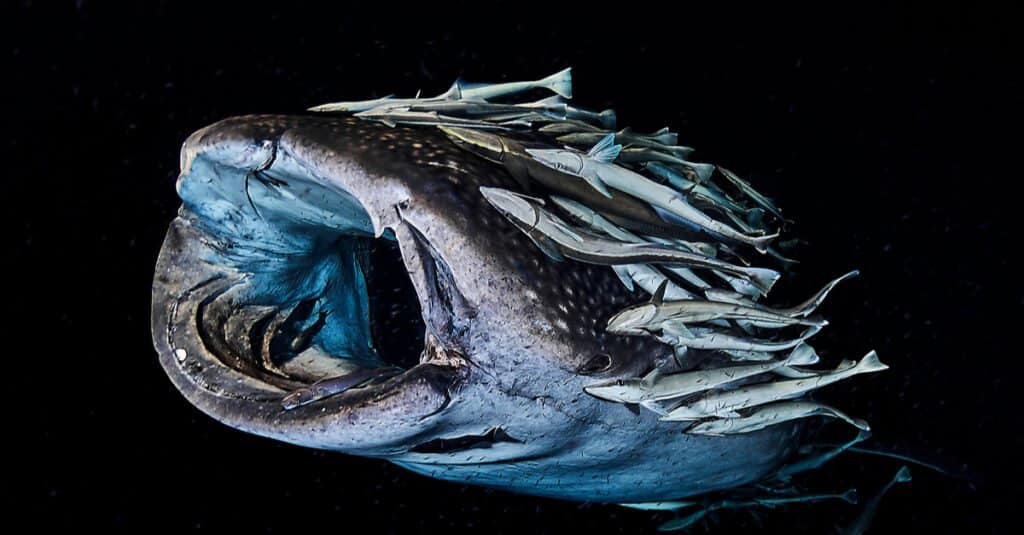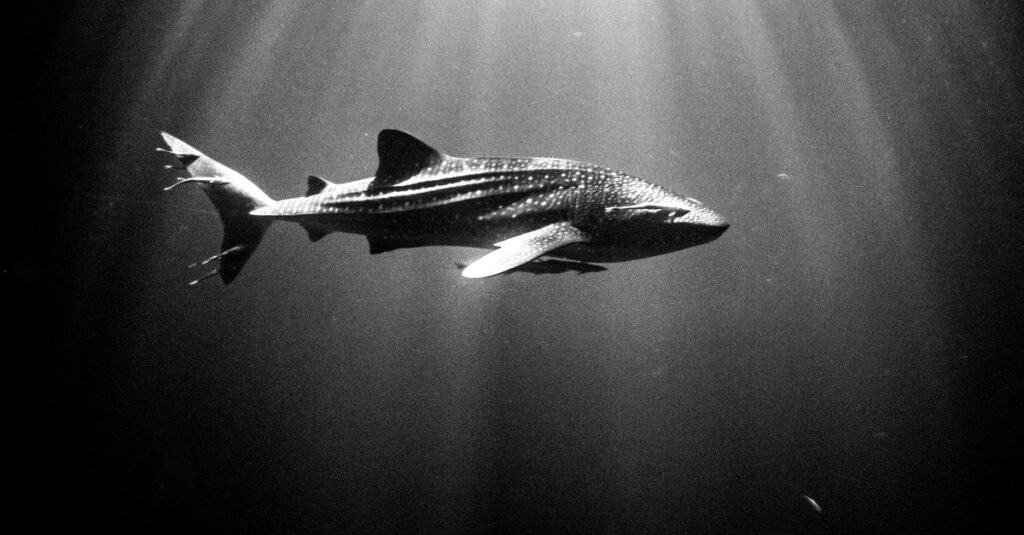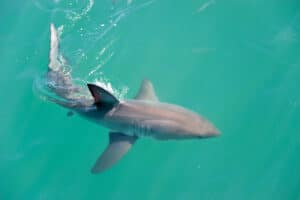- They come to the world in the company of a multitude of siblings although the process itself is shrouded in mystery.
- They will grow 1 foot every year if they are male and 8 inches if they are female.
Whale sharks are the biggest fish in the world, but much about them still remains unknown. Like many types of shark, they birth live young, but no one has observed a baby whale shark being born! In addition, captured pregnant whale sharks have contained more than 300 embryos, which is an amount higher than any shark on record. Let’s dive into baby whale sharks to discover 5 incredible facts and the mysteries scientists continue studying.
1. Whale Sharks Have the Largest Eggs of Any Animal on Earth

A baby whale shark set against a black background
©paul cowell/Shutterstock.com
Whale shark eggs are about twice the size of ostrich eggs. The Guinness Book of World Records classifies them as the largest eggs on Earth; there are specimens that have reached 12 inches and contained whale shark embryos that grew further. However, as you’ll discover in this post, you shouldn’t expect to find these eggs hidden at the bottom of the ocean.
2. A Baby Whale Shark is Called a “Pup” and may be the Biggest Litter of Any Shark!

A juvenile whale shark swimming in the ocean
©Lindsey Lu/Shutterstock.com
A female whale shark was captured in July 1996 off Taiwan and had a startling surprise inside it. The whale shark was pregnant with more than 300 embryos! That means whale sharks may give birth to the largest litter of any sharks. Most other shark species give birth to only a few sharks at once.
Another possibility is that whale sharks mate once and are able to store the sperm of males to be fertilized across long periods of time. Scientists still know very little about whale shark reproduction.
Baby whale sharks are named “pups.” Other marine animals with the babies known as pups include seals. Of course, on land baby dogs are known as “puppies.”
3. Baby Whale Sharks Take a Long Time to Grow Up and may Live More than 100 Years!

A whale shark surrounded by remora fish
©Alex Rush/Shutterstock.com
Compared to most species, baby whale sharks are already quite large (see baby whale shark fact #5), but they take a long time to grow up! The overall growth rates of whale sharks are poorly understood, however males grow faster. By the time a male whale shark reaches 35 years old, grown at a rate of about one foot per year. Female whale sharks grow at a lower pace, about 8 inches per year.
Of course, growing 8 inches to a foot per year really adds up, and the longest ever recorded whale shark measured 62 feet while they commonly reach maximums of around 40 feet. Due to their slow growth rates relative to their body size, whale sharks reach sexual maturity at a very late age. It’s estimated male whale sharks are 25 years old before they can mate. Because of this slow growth rate, whale sharks also live a very long time. Its estimated their lifespan ranges from 80 to 130 years!
4. No One has Seen a Whale Shark Give Birth
It’s one of the greatest ocean mysteries! No one has ever seen a whale shark give birth. Very little is known about the development process in general.
Now, you might note the first fact in this article was that whale sharks have the largest eggs. So, how can they also give birth? Well, the eggs remain in the whale shark’s body and they give birth to live young. The name for this adaptation of both egg laying and giving live birth is named “ovoviviparity.” It is common among many shark species.
5. A Whale Shark can be Up to 2 Feet Long at Birth!

This juvenile whale shark may be 5 years old but still faces the threat of predators
©Lindsey Lu/Shutterstock.com
The estimated size for whale sharks at birth is about 16 to 24 inches. Of course, a live birth has never been observed! So this is estimate is based off embryos that have been discovered and small whale sharks that were recently birth. While whale sharks will eventually get very large (with a lot of time), at birth they’re very susceptible to predation and will remain that way throughout the first decade of their lives.
Up Next…
Keep reading these posts for more incredible information about key animal facts.
- 10 Incredible Whale Shark Facts: How big do they grow? What size was the largest specimen ever found? How many youngsters do they birth? The answer to all these mysteries and more is one click away.
- Are Whale Sharks Dangerous? With their massive size and that wide maw it’s only natural to feel wary of them. But should you?
- Too Big to Hunt: What Eats Whale Sharks? That immense size seems a sufficient deterrent. But just how effective is it?
The photo featured at the top of this post is © Lindsey Lu/Shutterstock.com
Thank you for reading! Have some feedback for us? Contact the AZ Animals editorial team.






